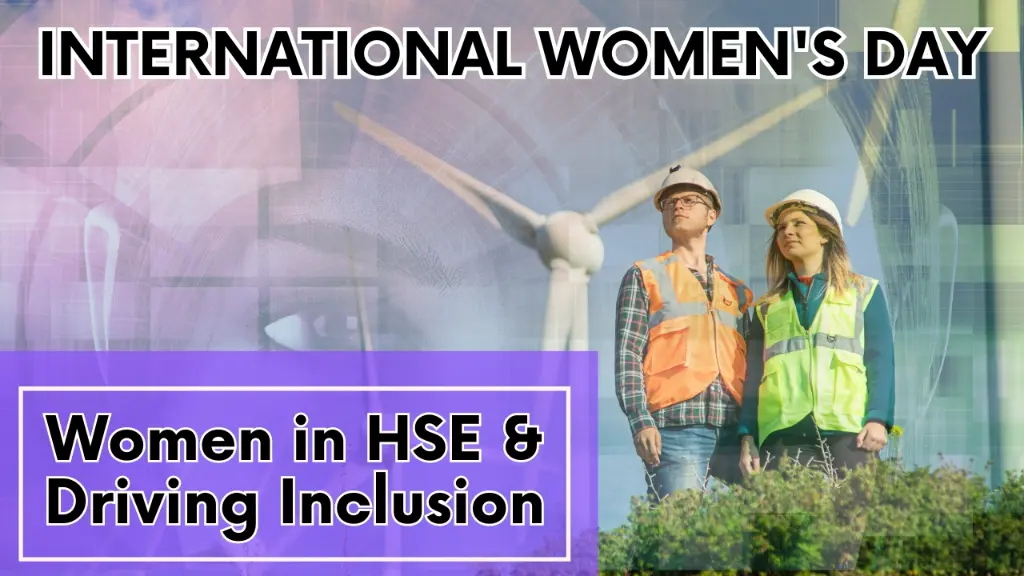This January 26th, embrace the spirit of the 2nd International Day of Clean Energy! HSE Professionals, discover practical tips and ways to engage your team, inspire action and implement sustainable practices at your workplace.
1. Introduction of International Day of Clean Energy 2025:
As Health, Safety and Environment (HSE) professionals, it is imperative for us to recognize and celebrate significant milestones that contribute to a safer and healthier planet. One such occasion that holds paramount importance is the International Day of Clean Energy.
This day is observed globally on 26 January each year and serves as a beacon of awareness, emphasizing the crucial role that clean energy plays in fostering sustainable development and mitigating environmental challenges.
2. What is Clean Energy:
Clean energy refers to energy that is produced using methods and technologies that have minimal impact on the environment and do not release harmful pollutants or greenhouse gases into the air. The goal of clean energy is to provide power while reducing negative effects on our planet and promoting sustainability.
2.1 Example of Clean Energy:
Solar energy is a great example of clean energy. It is generated by harnessing the power of sunlight using solar panels. These panels convert sunlight into electricity without emitting any pollutants. This means that when we use solar energy to power our homes or devices, we are not only tapping into a renewable resource (the sun) but also contributing to a cleaner and healthier environment.
Other examples of clean energy include wind power, hydropower (generated from flowing water), and geothermal energy (extracted from the Earth’s internal heat). By adopting these clean energy sources, we can reduce our reliance on fossil fuels and work towards a more sustainable and environmentally friendly energy future.
3. Why do we Celebrate International Day of Clean Energy:
The International Day of Clean Energy on 26 January was declared by the United Nations’ General Assembly (resolution A/77/327) as a call to raise awareness and mobilise action for a just and inclusive transition to clean energy for the benefit of people and the planet.
It is a testament to our collective commitment to promoting sustainable practices and reducing our carbon footprint.
This day serves as a platform to raise awareness about the significance of clean energy and encourages individuals, organisations and governments to adopt cleaner and more sustainable energy sources.
Here’s why celebrating this day is not just a feel-good exercise, but a critical step towards a sustainable future:
3.1 Combating Climate Change:
According to the Intergovernmental Panel on Climate Change (IPCC), human activities, particularly the burning of fossil fuels, are the primary contributors to climate change.
Coal, oil, and gas (fossil fuels) are responsible for nearly 90% of global carbon dioxide emissions.
Clean energy sources like solar, wind, and geothermal emit significantly less or no greenhouse gases, offering a crucial path to mitigate climate change.
Fossil fuels still dominate global energy production, but renewable sources of energy, such as: wind, solar, hydro, and geothermal, now power about 29% of electricity worldwide according to United Nations’s report.
3.2 Improving Public Health:
The World Health Organization (WHO) estimates that outdoor air pollution contributes to 4.2 million premature deaths annually.
United Nations’s Environment Progam’s statistics indicate that In 2019, 99% of the world population was living in places where the WHO’s air quality guideline levels were not met.
Clean energy sources contribute to improved air quality by reducing emissions of pollutants such as particulate matter and sulfur dioxide. Celebrating this day highlights the direct link between clean energy adoption and public health benefits.
3.3 Promoting Energy Security and Access:
Many countries rely heavily on imported fossil fuels, exposing them to price volatility and geopolitical uncertainties. Investing in clean energy creates domestic energy independence and enhances national security.
3.4 Energy Poverty:
Approximately 675 million people globally lack access to reliable electricity, hindering development and impacting health and education. Clean energy offers an opportunity to provide affordable and sustainable energy access to all, driving economic growth and improving livelihoods.
3.5 International Collaboration and Commitments:
The Paris Agreement (UN Climate Change Conference or COP21 in Paris, France, on 12 December 2015), signed by numerous countries, sets targets to limit global temperature rise and enhance climate resilience.
Moreover, Sustainable Development Goal no. 7 (SDG7) is about ensuring access to clean and affordable energy.
Celebrating International Day on Clean Energy reinforces the importance of international collaboration in achieving shared climate goals. It serves as a reminder of the commitments made under global agreements, urging nations to work collectively towards a sustainable and low-carbon future.
4. Tips for HSE Professionals to Celebrate International Day of Clean Energy at their Workplace:
HSE professionals play a crucial role in promoting environmental awareness and sustainability within organizations. International Day of Clean Energy (January 26th) presents a perfect opportunity to engage employees, encourage clean energy practices, and celebrate the industry’s progress towards a greener future. Here are some practical tips and ideas for HSE professionals to celebrate the day and foster a culture of clean energy at their workplace:
4.1 Educational Workshops, Awareness and Training Sessions:
4.1.1 Organize workshop/training/lunch-and-learn sessions:
Organize workshops and training sessions to educate employees about the importance of clean energy, its impact on the environment, and the benefits of transitioning to renewable sources.
You may invite guest speakers from renewable energy companies, environmental NGOs, or government agencies to talk about this subject.
4.1.2 Share success stories:
If your company has already implemented any clean energy initiatives, showcase them through internal newsletters, presentations, or social media posts. If not, then you may highlight case studies and success stories related to clean energy adoption in similar industries to inspire and demonstrate tangible results.
4.1.3 Create informative posters and infographics:
Display eye-catching visuals around the workplace that highlight key facts and statistics about clean energy, its various sources, and its impact on climate change and air pollution.
4.1.4 Run an internal clean energy quiz:
Encourage participation with prizes and use the quiz as a fun way to educate employees about different clean energy technologies and their applications.
4.2 Energy Audits and Efficiency Measures:
- Conduct energy audits to identify areas of improvement in energy consumption and efficiency. For example: improving insulation, installing solar panels, or switching to LED lighting.
- Implement energy-saving measures such as using energy-efficient lighting, optimizing equipment schedules, and upgrading machinery with more energy-efficient models. This can significantly reduce your company’s carbon footprint and save on energy costs in the long run.
4.3 Renewable Energy Demonstrations:
- Collaborate with clean energy providers to set up demonstrations of renewable energy technologies suitable for the workplace, such as solar panels or wind turbines.
- Provide hands-on experiences to showcase the feasibility and benefits of clean energy solutions.
4.4 Green Building Practices:
- In construction, promote green building practices by integrating energy-efficient designs, using sustainable materials, and incorporating renewable energy sources.
- Emphasize the importance of LEED (Leadership in Energy and Environmental Design) certification for construction projects to encourage environmentally conscious building standards.
4.5 Waste Reduction Initiatives:
- Implement waste reduction initiatives that complement clean energy efforts. For example, encourage recycling programs, reduce single-use plastics, and promote a circular economy mindset.
- Show how waste reduction contributes to a holistic approach to sustainability.
4.6 Employee Engagement and Recognition:
- Organize clean energy challenges or competitions among teams to encourage creative ideas for energy conservation.
- Recognize and reward individuals or teams that contribute significantly to clean energy initiatives, fostering a sense of pride and motivation.
- Organize a “Green Commute Challenge”: Encourage employees to walk, cycle, carpool, or use public transportation to work for a week. Offer incentives like wellness points or small prizes for participation.
4.7 Advocacy for Clean Energy Policies:
- Collaborate with management to advocate for the development and implementation of clean energy policies within the organization.
- Provide data and case studies demonstrating the long-term benefits of clean energy adoption to support policy decisions.
4.8 Community Outreach Programs:
- Extend clean energy initiatives to the community by organizing outreach programs or events.
- Engage with local schools, communities, or organizations to share knowledge about clean energy and inspire broader adoption.
4.9 Regular Environmental Impact Assessments:
- Conduct regular environmental impact assessments to measure the organization’s carbon footprint.
- Set targets for reducing carbon emissions and track progress over time to ensure continuous improvement.
4.10 Integration of Smart Technologies:
Explore and implement smart technologies that optimize energy consumption, such as automated lighting and HVAC systems, to enhance efficiency and reduce waste.
4.11 Promote Sustainable Transportation:
- Encourage the use of electric or hybrid vehicles within the organization.
- Implement bike-sharing or carpooling programs to reduce the environmental impact of daily commuting.
By incorporating these practical tips and celebrating the International Day of Clean Energy, HSE professionals can actively contribute to a cleaner and more sustainable workplace. Engaging team members, advocating for policy changes, and implementing tangible initiatives create a ripple effect that not only benefits the environment but also fosters a culture of responsibility and innovation within the organization.
For future updates, suggestion and discussion, please connect with us on Facebook, Twitter & Linkedin.
Click the link to read more topics on 2025 Calendar and Important Days for HSE Professionals.






